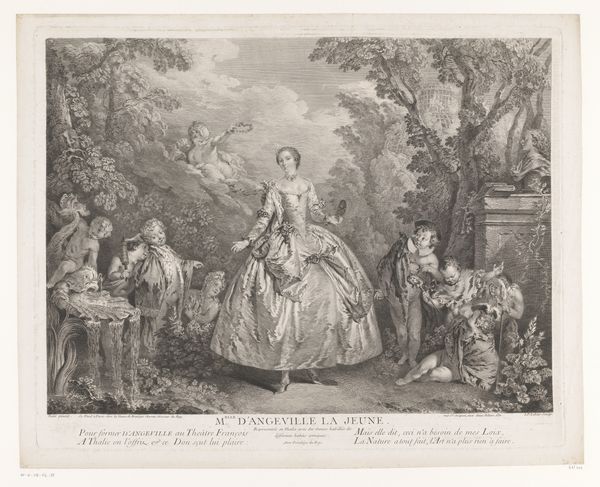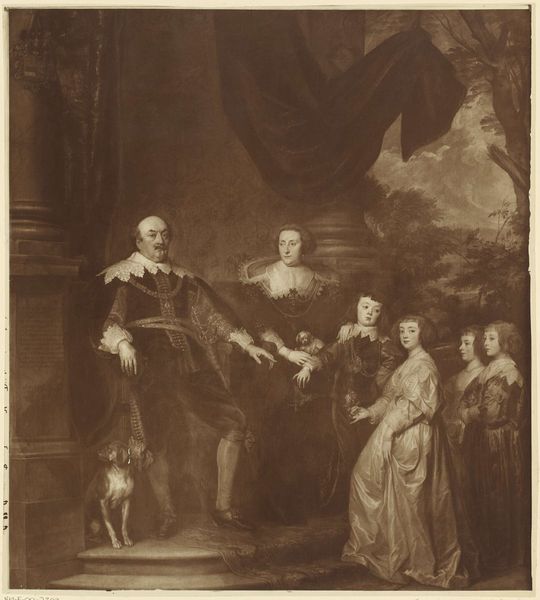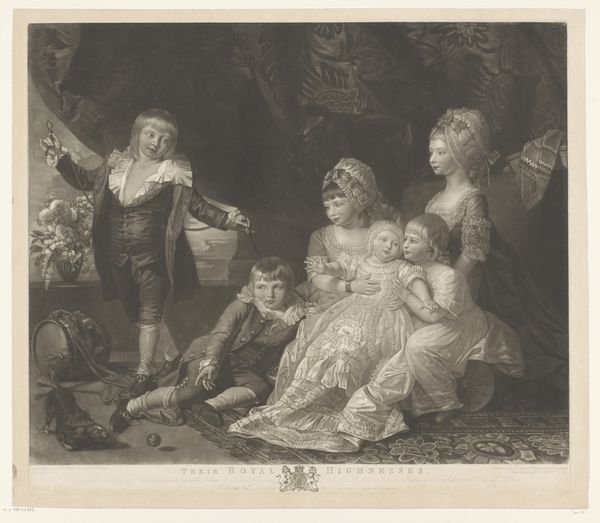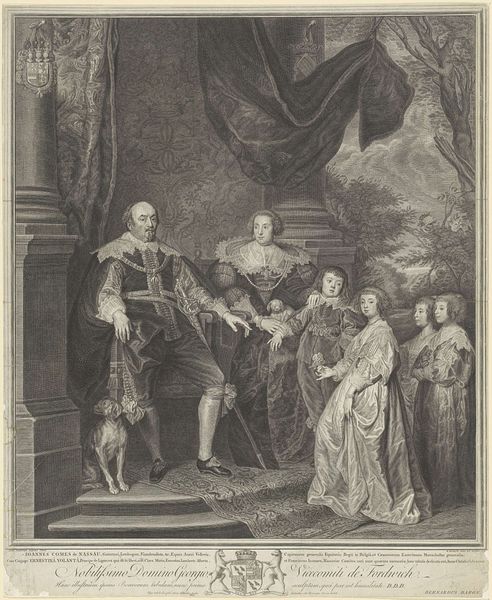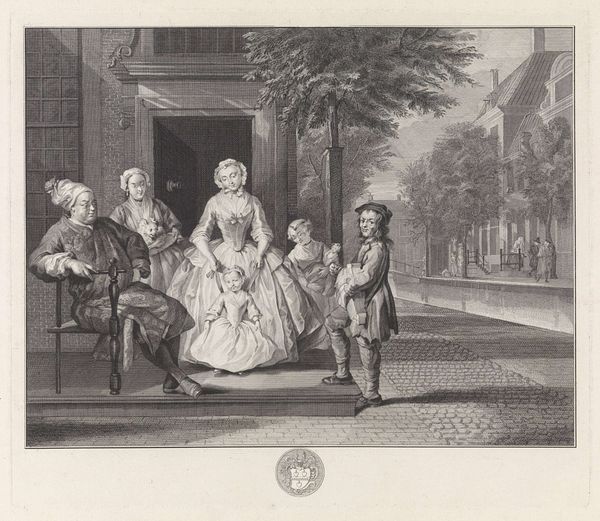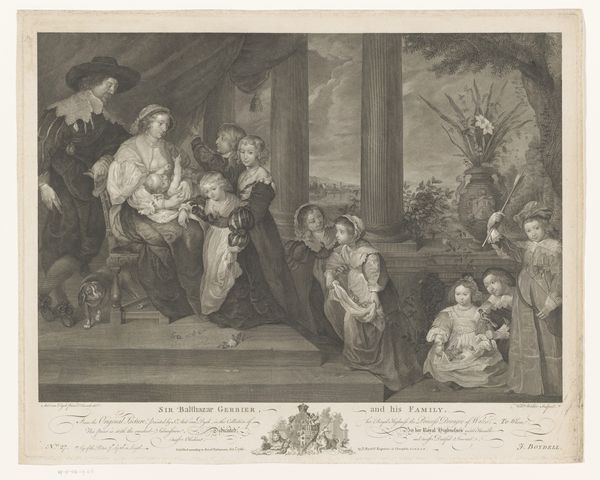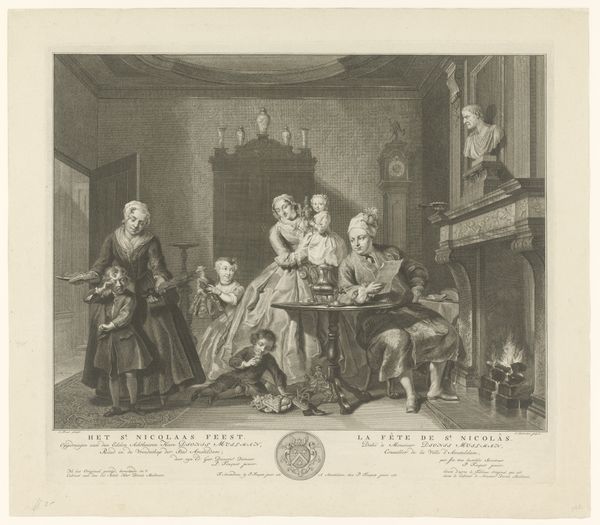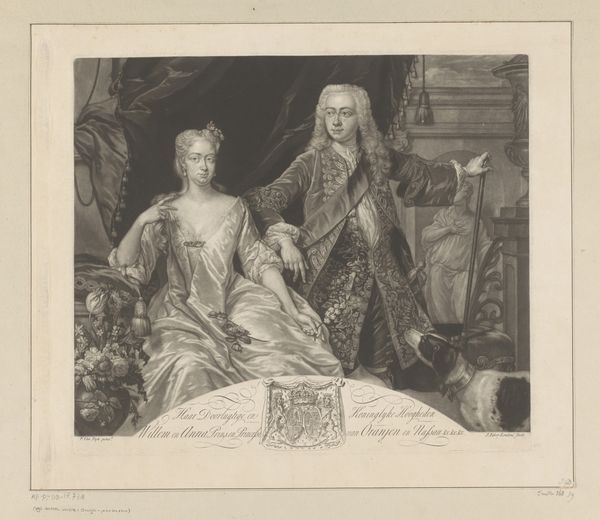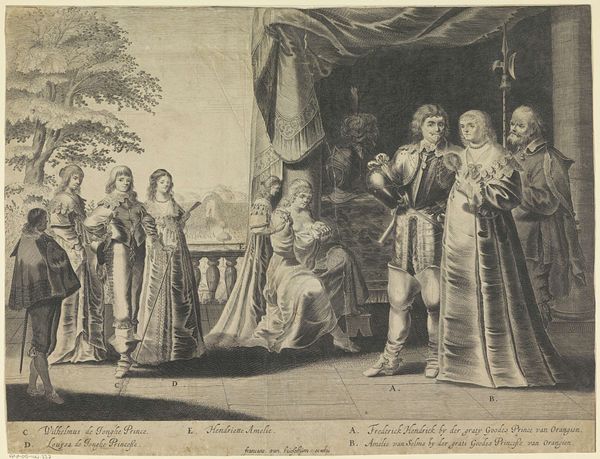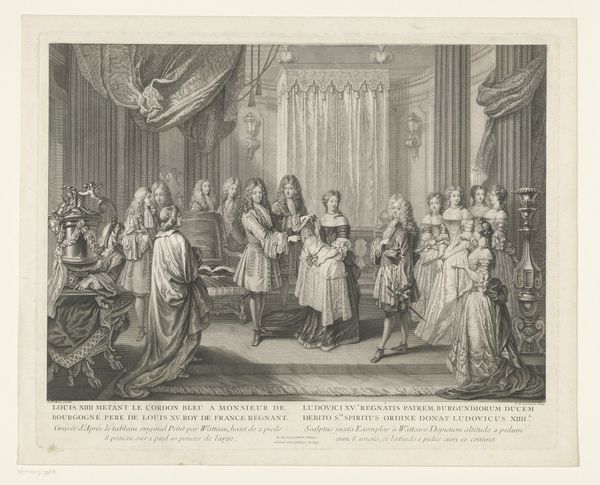
Portret van George III, koning van het Verenigd Koninkrijk, en zijn gezin 1770 - 1771
0:00
0:00
Dimensions: height 507 mm, width 584 mm
Copyright: Rijks Museum: Open Domain
Richard Earlom created this print of King George III and his family, and without a date on the work, it is hard to tell when exactly it was made. The print is made using a process called mezzotint, a painstaking technique where the artist roughens the entire plate with tiny dots, creating a field of tone. The image is then created by selectively burnishing or scraping away these dots to create lighter areas. Look closely, and you'll notice how the mezzotint lends a softness and depth to the textures of the royal family’s clothing and skin. The velvety blacks and subtle gradations of light and shadow give the portrait a rich, almost painterly quality. It’s a process demanding incredible skill, and was often used for the reproduction of paintings, making art accessible to a wider audience. Earlom’s choice of mezzotint emphasizes the royal family's opulence but it also reflects a wider social context. Prints like these were commodities, produced and consumed within a burgeoning capitalist system. The labor-intensive process contrasts sharply with the image of aristocratic ease, reminding us of the complex relationship between art, labor, and power in 18th-century Britain.
Comments
No comments
Be the first to comment and join the conversation on the ultimate creative platform.
